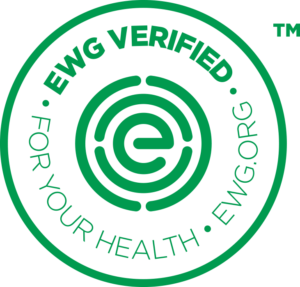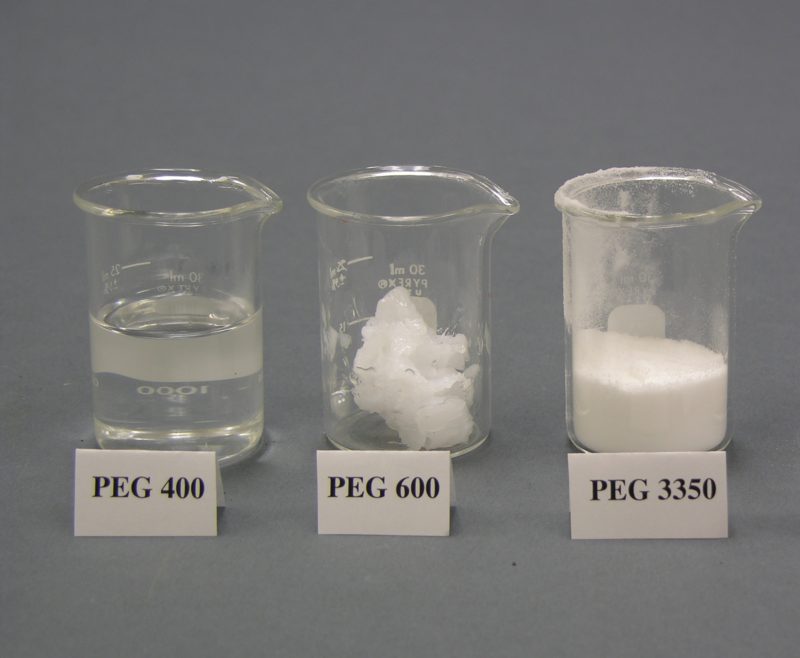by Wayne Willis
In an abundance of caution, some observers have put all polyethylene glycols (PEGs) on lists of ingredients that are to be avoided in personal care products. They ask, “What’s illumai’s position on PEGs?”
Let’s start with first principles. Dr. Zasloff and all the members of our team are totally committed to HEALTHY beauty. No one here would ever put anyone at risk. Further, we believe strongly that by not breaking the water barrier (leaving the lipids that are on top of your head mostly intact) and by restoring and not disrupting the microbiome, we are affirmatively adding to the strength and health of our customers. Personally speaking, my mission is to introduce the concept of biome care to the market and to help lead the transition from
and all the members of our team are totally committed to HEALTHY beauty. No one here would ever put anyone at risk. Further, we believe strongly that by not breaking the water barrier (leaving the lipids that are on top of your head mostly intact) and by restoring and not disrupting the microbiome, we are affirmatively adding to the strength and health of our customers. Personally speaking, my mission is to introduce the concept of biome care to the market and to help lead the transition from
Personally speaking, my mission is to introduce the concept of biome care to the market and to help lead the transition from 20th century “better living through chemistry” to a 21st appreciation that personal care must be based on respect for biological systems.
So how do those first principles apply to PEGs used in illumai? With respect to all our ingredients, each and every one is on the Generally Recognized As Safe (GRAS) list issued under the FDA laws. Note these ingredients are recognized as safe when added to foods. Obviously, if the ingredients are safe when ingested, they are safe when slathered on the head!
Having said that, the GRAS list is not a particularly high standard to meet, but the lawyer in me was happy to know that these ingredients have been used for years and years in thousands of products without incident. Again, that’s more “meets minimums” than “meets the highest standards,” but before I ever got involved, I did the research (and our investors did too) and determined that everything here was not only safe for humans, but safe for the environment, too — after being sent down the drain.
Now, addressing the PEGs specifically, if you drill into the research, you’ll see that the issue is not the PEG itself, but rather the potential by-product of incomplete synthesis when making the PEG. That is, when the PEG is being made, if the chemical company isn’t careful, the reaction can fail to complete and thereby create a by-product called 1,4 dioxane, “dioxane” for short. While this molecule is a bad actor, it’s not nearly as bad as dioxin, a known carcinogen — with which it’s sometimes confused. Again, PEGs that are made carefully don’t have the byproduct, and we sourced all our ingredients from US manufacturers for this reason. (We also buy pharma grade or food grade ingredients when offered, for the same reason.)
Here’s where perception and reality diverge: The reality is that the PEGs are safe the way we buy and use them. But the fear of dioxane contamination has led the Environmental Working Group (EWG) and others to warn consumers to “try to avoid” PEGs. That said, the warning is not particularly stern, as the PEGs get a rating of “3” on the EWG Skin Deep Database (which ranks ingredients for toxicity from 1 to 9, with higher numbers being more questionable). Most of the products you use rank as a 3 or higher on the EWG rating system.
However, because we are focusing on the wellness markets and want to avoid any questions, we’ve decided to switch, not fight. It turns out that our PEGs are a) minor ingredients (i.e, very dilute — < 2% of total) and b) easily replaced by ingredients rated by EWG Skindeep database as “1”). It’s simply easier to switch ingredients than to have to explain why the PEGs are not problematic.
That said, PEGs, especially the way we source and use them, are safe. I’d be happy to have Dr. Zasloff go into the details on that for you. Using illumai as currently constituted is not a problem. Period.
 When our formulations were first being developed, the EWG Verified program did not exist. Now that it does, we plan to use the next round of fundraising to create more inventory using a revised formula that replaces the PEGs — not because there’s a REAL problem (given our carefulness in sourcing and use), but because there’s a perceived problem that’s simple to avoid. We call this revised formulation “Project 3.0” and it’s already completed the laboratory work.
When our formulations were first being developed, the EWG Verified program did not exist. Now that it does, we plan to use the next round of fundraising to create more inventory using a revised formula that replaces the PEGs — not because there’s a REAL problem (given our carefulness in sourcing and use), but because there’s a perceived problem that’s simple to avoid. We call this revised formulation “Project 3.0” and it’s already completed the laboratory work.
What especially annoys me is about this PEG question is that it distracts people from the real harm being done — how conventional products (even those that are natural, organic or “non-toxic”) damage the scalp and hair, medically insult the microbiome, expose consumers to silicones and preservatives and all. Arghhh! We are pushing for true, healthy beauty, and until we can re-run another inventory batch without the PEGs, ingredient purists will lean away from us based on a fear that is not really warranted … and use products which may not be as healthy as illumai.
